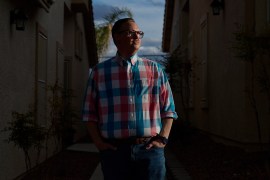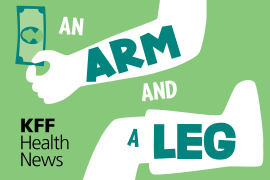Weekend Reading: A Cancer Hospital’s Controversial Admission Procedures
Every week Ankita Rao selects interesting reading from around the Web.
ProPublica: How Mom's Death Changed My Thinking About End-Of-Life Care
My father, sister and I sat in the near-empty Chinese restaurant, picking at our plates, unable to avoid the question that we'd gathered to discuss: When was it time to let Mom die? ... My father and sister looked to me for my thoughts. In our family, after all, I'm the go-to guy for all things medical. I've been a health care reporter for 15 years: at the Dallas Morning News, the Los Angeles Times and now ProPublica. And since I have a relatively good grasp on America's complex health care system, I was the one to help my parents sign up for their Medicare drug plans, research new diagnoses and question doctors about their recommended treatments. In this situation, like so many before, I was expected to have some answers. Yet none of my years of reporting had prepared me for this moment, this decision. In fact, I began to question some of my assumptions about the health care system (Charles Ornstein, 2/28)
Reuters: Behind A Cancer-Treatment Firm's Rosy Survival Claims
When the local doctor who had been treating Vicky Hilborn told her that her rare cancer had spread throughout her body, including her brain, she and her husband refused to accept a death sentence. Within days, Keith Hilborn was on the phone with an "oncology information specialist" at Cancer Treatment Centers of America. … His call secured Vicky an appointment at the for-profit, privately held company's Philadelphia affiliate, Eastern Regional Medical Center. There, the oncologist who examined Vicky told the couple he had treated other cases of histiocytic sarcoma, the cancer of immune-system cells that she had. … Vicky Hilborn never got another appointment with CTCA. She died on September 6, 2009, at age 48. CTCA is not unique in turning away patients. A lot of doctors, hospitals and other healthcare providers in the United States decline to treat people who can't pay, or have inadequate insurance, among other reasons. What sets CTCA apart is that rejecting certain patients and, even more, culling some of its patients from its survival data lets the company tout in ads and post on its website patient outcomes that look dramatically better than they would if the company treated all comers (Begley and Respaut, 3/6).
The Atlantic: Kind Neighbors Are Scarce, But Important
Suburbanites, as compared to urban and rural dwellers, are most certain of their access to community resources. They also care least about their neighbors. As such, their safe, affordable housing in unpolluted environments, with nearby health centers and plentiful recreation space, are good because they benefit them individually; that their fellow suburbanites benefit as well is almost incidental. It's not just them. Strong communities made up of neighbors that care for, and about, one another are low on the list of health concerns of most Americans. In a survey conducted for The Atlantic in conjunction with GlaxoSmithKline, a representative sample of 1,000 Americans revealed that our priorities for building healthy communities are inextricable from our reliance on institutions. The results of various questions show that many of us tend to put the responsibility for our community's' health in the hands of doctors and hospitals, whom we expect to be regularly available, in-person. Overall, participants ranked regular access to doctors and dentists (82 percent said it was "very important") second only to clean air and water (87 percent) as community resources that are important to their health (Lindsay Abrams, 3/6)
The New York Times: Construction That Focuses On Health Of Residents
Doctors, social agencies and community groups that have long been frustrated by the inability to alleviate environmental conditions that contribute to ailments like heart disease and obesity are promoting the idea that a shift in land-use planning and design can stanch some of the harmful influences. The concept is being put to one of its earliest and biggest tests in the La Alma/Lincoln Park neighborhood near downtown Denver. That's where the city's housing authority used a relatively new decision-making tool known as a health impact assessment to draft a redevelopment plan that encourages physical activity and environmental sustainability (Joe Gose, 3/5).
Health Affairs: How 'Person-Centered' Care Helped Guide Me Toward Recovery From Mental Illness
I was 14 and growing up in a small suburban town in Kentucky with my parents and 16-year-old brother. I loved school and I loved the arts, wandering my high school’s hallways with a paintbrush stuck in my messy ponytail. With my nose in a book or my feet in ballet slippers, I appeared to lead a relatively normal teenage life. Hidden beneath the surface, though, were secrets. A neighbor had sexually abused me for much of my childhood, until I was 13, manipulating me into believing that it was my fault. If I told anyone, he said, he would murder my family. … With the perspective of time, I can now reflect on what I learned from those experiences, what was and wasn't helpful for me during my time of crisis, and how mental health providers could treat their patients better (Ashley Clayton, 3/6).






